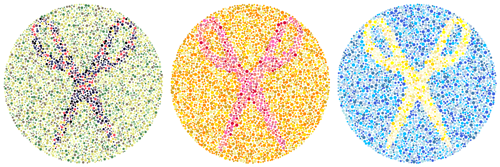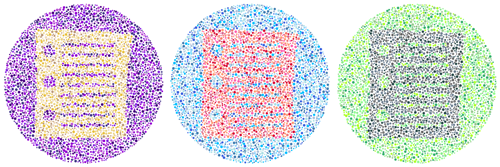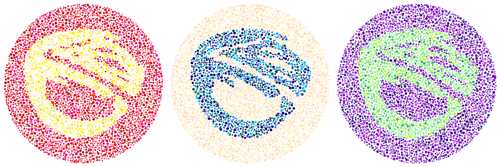Elevating Uno
Pilatch needed a game to demonstrate its educational potential. It had to be easy yet exciting, and trick the player into learning arithmetic.
This was also an opportunity to showcase the accessibility of Pilatch decks. This article discusses how Elevator Buttons differs from the game that inspired it, Uno, and how a Pilatch deck differs from the deck that inspired it, Poker.

Like most Pilatch games, this one began by trying to play an existing game with a Pilatch deck. Initially that fails because a Pilatch deck is so different from standard playing cards. So it takes shoe-horning and tweaking to get something playable before game development begins with other humans.
Uno was a good starting point because it's a simple game for kids. For those unaware, an Uno deck is divided into four colorful suits. In this way a Pilatch deck is more like an Uno deck than a Poker deck because each Pilatch suit gets its own color. This has accessibility benefits. It drops the requirement that players recognize one symbol versus another, as required to differentiate between hearts and diamonds for instance. Even adult players have mentally simplified the Pilatch suits to: red, green, blue.

So that's how Pilatch and Uno decks are similar, but differentiating colors isn't easy for everyone. Uno is less accessible in this regard because the majority of its cards only differ by color. To someone who is red/green colorblind, Uno's red 7 and green 7 may look the same. Thankfully Pilatch players have access to an additional suit identifier. Each suit icon's shape is unique. Scissors look pointy and hollow. Paper is rectangular, two-dimensional. Rock appears plump and organic. Anothe benefit of these symbols is that they represent concrete objects that children are familiar with. So parents are spared explaining the difference between abstract concepts such as clubs and spades.
Elevator Buttons copies the Uno goal to empty your hand, but I went a different route for legal plays. Because I wanted a game that taught basic Maths, playing one card at a time limited interaction. By playing multiple cards at once players could add up their cards' ranks. Because the game revolved around addition, its deck-build consists of only numbered ranks. No need to make players remember extra details such as, face cards are worth 10 points, and Jokers 15. The new rank, 1, further removed ambiguity that otherwise would have accompanied the Ace, Poker's de facto 1.
I also opted against the Uno rule that forces a player to follow suit unless she has the same rank of the last card played. That decision was based on the hunch that a player would infrequently have the same total rank, (in one suit), in her hand as the last rank-sum played. It would lead to undesirable themes in game play: players would spend too much time trying to find a combination of ranks that added up to the previous, and suits would quickly be exhausted. Both stagnate the game.
Instead a binary card was introduced to push players in a given direction, and offer more tactical analysis to the game play. It also gave the game a change of tempo when the previous rank-sum actually was matched, much like in Uno where you changed the color by matching the previous rank.
The final matter of accessibility I'll mention is shuffling, which is often overlooked. Playing with a thirty-card deck has the benefit of being more easily shuffled by hands that are either little, or inexperienced in riffling cards. Ever watch somebody who's new to card games randomize and deal a fifty-two-card poker deck? It's painful for anyone without saint-like patience. Now consider how many cards are in an Uno deck. One-hundred and eight!
Post Script
Dot Art
The dot-art featured in this article was procedurally generated. You can learn how here - Generating Color Blindness Test Images with Processing by Gregor Aisch.
Results of Development
This article is about design and not development partly because Elevator Buttons resisted change except for one alteration. The direction card is now always DOWN at the beginning of the game. This prevents an annoying scenario where the first player dumps all of the cards in a suit from her hand. It makes you do too much addition, and promptly leads to neither player being able to take actions when the direction is UP.
I didn't expect Elevator Buttons to play well with multiples of three players, based on the rule that the next required suit continuously cycles. Meaning, with three or six players, I assumed each player would be stuck playing the same suit for most of the game. However game development revealed it does play well with three players. Whenever somebody can't make a play, that rotates the suit cycle, so it stays fresh and unpredictable.
I witnessed a middle-schooler beat a Mensa member at the game. When I queried what happened, the genius helplessly replied, "I misread him." It made me proud to see that I had created something allowing kids and adults compete on a level playing field.
Play Tester Credits
Elevator Buttons wasn't named until an autumn evening in the Poconos. What else are you going to do when there's no internet or TV in the middle of a forest at night? Play games of course. My sister in-law Amanda is credited for the title Elevator Buttons. It's endearing and descriptive of the game play, even suggestive of the unwelcome consequences that can follow when a child lights up all the buttons on an elevator's control panel.
The first player to verbalize that he didn't think of Pilatch's suits as rock, paper, and scissors but instead red, green, and blue is my esteemed friend and former neighbor, Tim.

